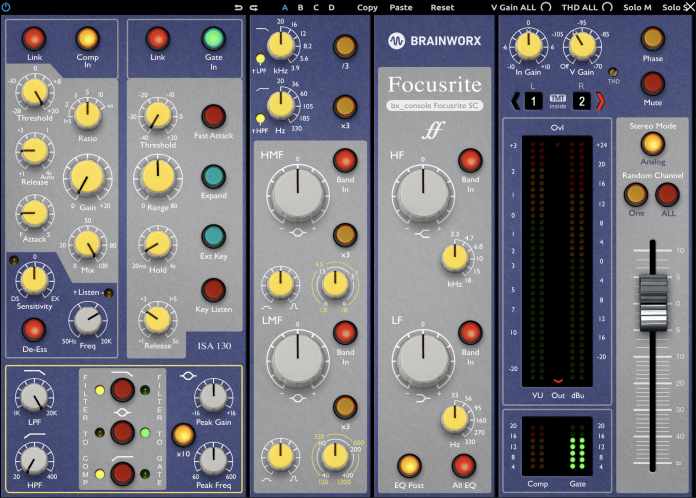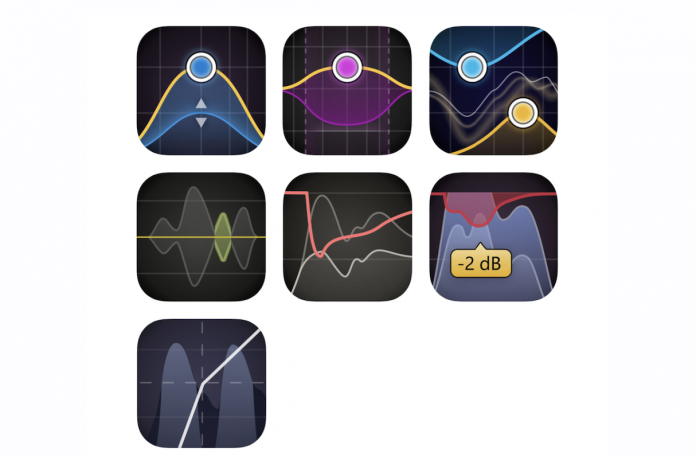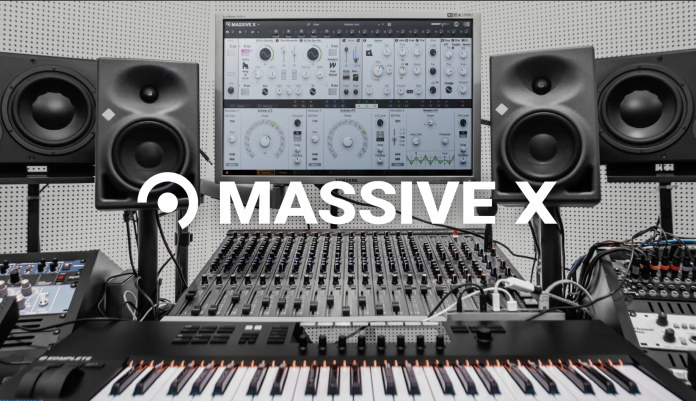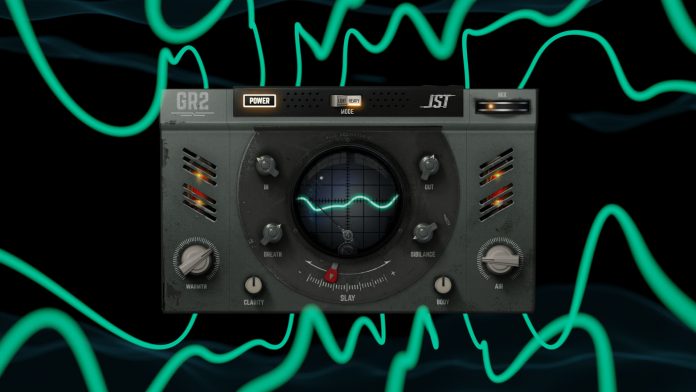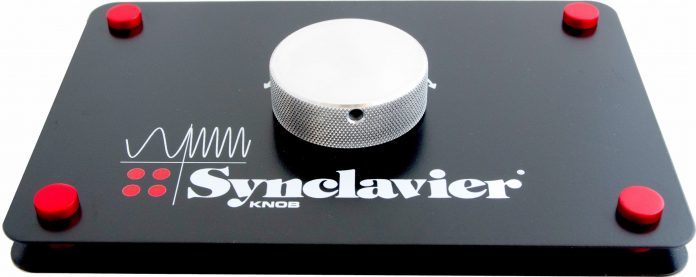Synclavier Digital is proud to announce availability of the standalone Synclavier KNOB — a re- engineered re-creation of the original knob central to the seminal Synclavier® II Digital Synthesizer’s speedy control surface, specially commissioned by co-inventor Cameron Jones as a USB device designed to perfectly compliment the newly- created Canadian corporation’s creation of a next-generation Synclavier, recently released as awe-inspiring Synclavier Go! and Synclavier Pocket! iOS apps fit for today’s owners of Apple’s inescapable iPad and iPhone/iPod Touch platforms, putting all the famed FM (Frequency Modulation) and Additive (harmonic) synthesis capabilities of the iconic instrument as well as its intuitive panels of easy-to-touch red backlit buttons in anyone’s hands (and pockets) at an affordable fraction of the trailblazing original’s prohibitive pricing.
Like the Synclavier Go! and Synclavier Pocket! iOS apps with which it is designed to work so satisfyingly, the standalone Synclavier KNOB has history. “During development of the first Synclavier prototype, I remember Sydney Alonso brought me a sheet of aluminium with a bunch of knobs on it,” says Synclavier® co-inventor Cameron Jones, casting his mind way back to Dartmouth College — a private Ivy League research university in Hanover, New Hampshire, USA — and the 1976 origins of what would ultimately become New England Digital’s world-class showpiece as an innovative hardware and software system for all digital non-linear synthesis, polyphonic sampling, magnetic (hard-disk) recording and sequencing systems technology that is commonplace in all music and sound effects/design today. Though turning the tide on music production back in those heady days was far from assured, Cameron Jones was seemingly self assured from the get-go: “I took one look at it, and said, ‘No, this isn’t going to work! Why can’t we have just one knob?’”
Needless to say, the approach to the Synclavier® was testament to thinking different — long before fellow North American ‘Class of 1976’ startup Apple popularised the term throughout the noughties and beyond. But rather than have a small knob for every parameter — like most of the analogue synthesizers of the time, the Synclavier® was to have one large, feel-good knob, which controlled whichever parameter was active at any given time.
Fast-forward forty-odd years to today, that iconic knob is back — back as Synclavier KNOB, a re-engineered re-creation of the original knob central to the seminal Synclavier® II Digital Synthesizer’s speedy control surface. Since he wanted Synclavier Go! and Synclavier Pocket! users to have the full Synclavier experience, ‘commissioner’ Cameron Jones gave the one original knob he had from a Synclavier® II VPK (Velocity-Pressure Keyboard) to Craig Phillips, a 20-year software veteran with whom he had joined forces, forming Synclavier Digital Corporation Limited to pursue next-generation Synclavier creation. Callipers in hand, measurements were meticulously made and technical drawings duly created. “It had to feel the same,” states Cameron Jones, before continuing: “I didn’t want to disappoint users of the original system. Many people have built their careers using my hardware, and that makes me happy.”
Happily for all concerned, the results surely speak for themselves. The knob from which Synclavier KNOB takes its apt appellation is milled from a bar of two-inch aluminium on a 1986-vintage lathe in Synclavier Digital’s Canadian hometown. From its dimensions to its knurling pattern, everything is indistinguishable from the original. On the face of it, it is literally like stepping back in time! The high-quality spring-pins and extension springs so critical to its satisfyingly smooth operation were specially sourced and tested. The front and back panels were also manufactured in Nova Scotia, while the overall styling is a knowing nod in the distinctive direction of the black panel on the top-tier VPK instrument with which New England Digital ultimately signed off when filing for bankruptcy… but not before the cutting-edge- enabling company succeeded in securing itself pole position in music technology history. Having said that, the corner stand-offs on Synclavier KNOB represent those iconic red backlit buttons with which the trailblazing, speedy Synclavier® will forever be put on a pedestal.
Put it this way: when a prototype was showcased alongside Synclavier Go! and Synclavier Pocket! earlier this year at The 2019 NAMM Show in Southern California, “…some people were visiting our booth just to see the Synclavier KNOB.” So says Craig Phillips, semi-seriously adding: “It might be the most expensive knob in the world; it’s certainly the most expensive pitch-bend wheel we know about! People asked, ‘What’s it all about?’ I joked, ‘It’s a knob; it turns left or right.’ But then I went on to explain the finer points, because there’s obviously a lot more to it.”
Indeed there is. Speaking specifically, Synclavier KNOB is a precision rate-of-change controller. It is spring-loaded; let go and it returns to the centre. Connect it to those respectively remarkable — and remarkably priced — iOS apps and that is when those touchy-feely, magical movements make all the difference. When users start to turn the Synclavier KNOB, it affects whichever parameter they have selected from those red backlit buttons on their iPad- or iPhone/iPod Touch-hosted Synclavier Go! or Synclavier Pocket! And as they turn the Synclavier KNOB further, the tension they feel increases accordingly — as does the rate at which the selected parameter increases or decreases, allowing them to speedily and accurately reach their desired value. As a result, Synclavier KNOB naturally feels good when being put to good use — just like the original knob central to the seminal Synclavier® II Digital Synthesizer’s speedy control surface.
Synclavier KNOB has been intelligently designed, too. The same hysteresis algorithms associated with the original knob are also applied to this new re-engineered re- creation. Reality dictates that time and tide waits for no-one, however. Smarter software dictates how Synclavier KNOB changes any selected parameter’s value; in effect, the Synclavier KNOB ‘knows’ how to increment (or decrement) each parameter in an appropriate way — whether by tens, units, or decimals. Deeper still, selecting the (Fine) button in Synclavier Go! makes Synclavier KNOB even more sensitive to movements.
Put this all together, then, and what have you got? Genuine Synclavier® functionality fit for today’s iPad and iPhone/iPod Touch generation. Get this, though. The still- beloved speedy Synclavier® systems of yesteryear permit privileged users to select multiple parameters simultaneously. Synclavier KNOB nails this, too. Turn its knob clockwise and the selected values are all nudged up in concert until the highest value selected reaches its ceiling, at which point it is maxed out. Above and beyond that, the algorithms get even more complex when different kinds of parameters are selected; so, for instance, simultaneously selecting Release — which is in milliseconds — and Peak — a percentage — from the Envelope settings with a swipe of a finger forces Synclavier KNOB to modify both values in increments appropriate to increasing the envelope of the sound vertically and horizontally when turning the knob. Needless to say, long-term Synclavier® user and product specialist Kevin Maloney sounds suitably impressed: ”Once you get used to it, it’s magnitudes quicker than using a mouse and keyboard.”
Cutting to the chase, speed of use and a feel-good factor sums up why this form of input is so appealing. Ask any Synclavier® user; using the knob encourages sound design by ear — less concerned with exact numbers on displays and more about how it actually sounds — by keeping their left hand on the knob while flitting back and forth between the red backlit buttons and the keyboard with their right hand, letting the sound itself be their guide. Getting a Synclavier KNOB alongside an iPad running Synclavier Go! effectively puts the seminal Synclavier® II Digital Synthesizer — and its inherent speed — at anyone’s fingertips, and at an affordable fraction of the trailblazing original’s prohibitive pricing to boot! By running the same DSP engine it sounds the same, because it is the same… not necessarily better, but assuredly an evolved experience like no other, thanks — in no small part — to Synclavier KNOB!




